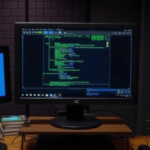Software engineering is more than just writing code. It’s a vast, ever-evolving field that powers everything from the apps on your phone to the complex systems running global financial markets. And with the industry projected to grow by 25% over the next decade (BLS, 2023), understanding its major subfields isn’t just useful—it’s essential.
At its core, software engineering is about designing, building, and maintaining reliable systems. But the field doesn’t stop there. From front-end development that shapes user experiences to machine learning engineering that drives artificial intelligence, software engineering spans a diverse set of disciplines. Each subfield requires unique skills, tools, and approaches. Want to build high-performance applications? You’ll need expertise in systems programming.
Interested in keeping data safe? Cybersecurity engineering is your calling.
The Major Subfields of Software Engineering
1. Front-End Development
Front-end development focuses on creating intuitive and responsive user interfaces. Developers in this subfield use technologies like HTML, CSS, and JavaScript frameworks (React, Vue, Angular) to ensure seamless interactions between users and applications. Mastering UI/UX principles, optimizing performance, and ensuring cross-browser compatibility are key responsibilities.
2. Back-End Development
Back-end engineers work behind the scenes, managing databases, server logic, and API integrations. This subfield involves using languages like Python, Java, Node.js, and Ruby on Rails to build scalable and efficient server-side applications. Database management with SQL and NoSQL solutions is crucial, as is security implementation to safeguard user data.
3. Full-Stack Development
A combination of front-end and back-end expertise, full-stack development enables engineers to build complete applications. Mastery of both client-side and server-side technologies ensures flexibility in designing and deploying web and mobile solutions. Full-stack developers need strong problem-solving skills and familiarity with cloud computing, DevOps, and microservices.
4. DevOps Engineering
DevOps bridges the gap between development and IT operations, streamlining deployment, testing, and monitoring. These engineers focus on automation using tools like Docker, Kubernetes, Jenkins, and CI/CD pipelines to enhance efficiency. They play a crucial role in optimizing software delivery, minimizing downtime, and improving security.
5. Cybersecurity Engineering
With increasing cyber threats, cybersecurity engineers protect applications and networks from breaches. This subfield requires expertise in encryption, penetration testing, threat modeling, and compliance regulations. Cybersecurity professionals use tools like Wireshark, Metasploit, and firewall systems to fortify defenses.
6. Data Science and Machine Learning Engineering
Data science and machine learning engineering involve extracting insights from large datasets and developing predictive models. Professionals in this field use Python, R, TensorFlow, and PyTorch to implement AI-driven applications. Specializations include natural language processing (NLP), computer vision, and recommendation systems.
7. Cloud Computing Engineering
Cloud computing engineers design and maintain cloud infrastructures, ensuring scalable and cost-effective solutions. Expertise in AWS, Microsoft Azure, Google Cloud, and containerization technologies is essential. Cloud security and performance optimization are critical to this role.
8. Embedded Systems Engineering
Embedded systems engineers work with hardware-software integration, developing real-time operating systems (RTOS) and IoT applications. They use C, C++, and assembly language to build firmware and optimize resource-constrained devices. Industries like automotive, healthcare, and consumer electronics rely on embedded systems expertise.
9. Mobile App Development
Mobile developers create applications for iOS and Android devices, utilizing Swift, Kotlin, Flutter, and React Native. Optimization for performance, battery efficiency, and user experience is critical. The field includes both native and cross-platform development.
10. Quality Assurance (QA) and Testing
QA engineers ensure software reliability through rigorous testing methodologies, including unit testing, integration testing, and automation frameworks like Selenium and Jest. Their goal is to identify vulnerabilities and enhance system performance before deployment.
Choosing the Right Path in Software Engineering

The best subfield depends on your interests, career goals, and preferred technologies. Consider these factors:
- If you enjoy visual design and user interaction, front-end development might be ideal.
- If you prefer working on system logic and data structures, back-end or full-stack development could be a great fit.
- For those interested in automation and efficiency, DevOps offers an exciting challenge.
- If security and risk management intrigue you, cybersecurity engineering is in high demand.
- For AI enthusiasts, data science and machine learning provide cutting-edge opportunities.
- If you like working with hardware and software together, embedded systems are essential in various industries.
Conclusion
Software engineering is a dynamic and rewarding field, offering numerous opportunities for specialization. Whether you aim to develop user-friendly applications, secure data, optimize cloud services, or build intelligent AI systems, there’s a subfield that aligns with your passion. By understanding these domains and keeping up with industry advancements, you can carve out a successful career in software engineering. Choose your path, hone your skills, and embrace the future of technology!



